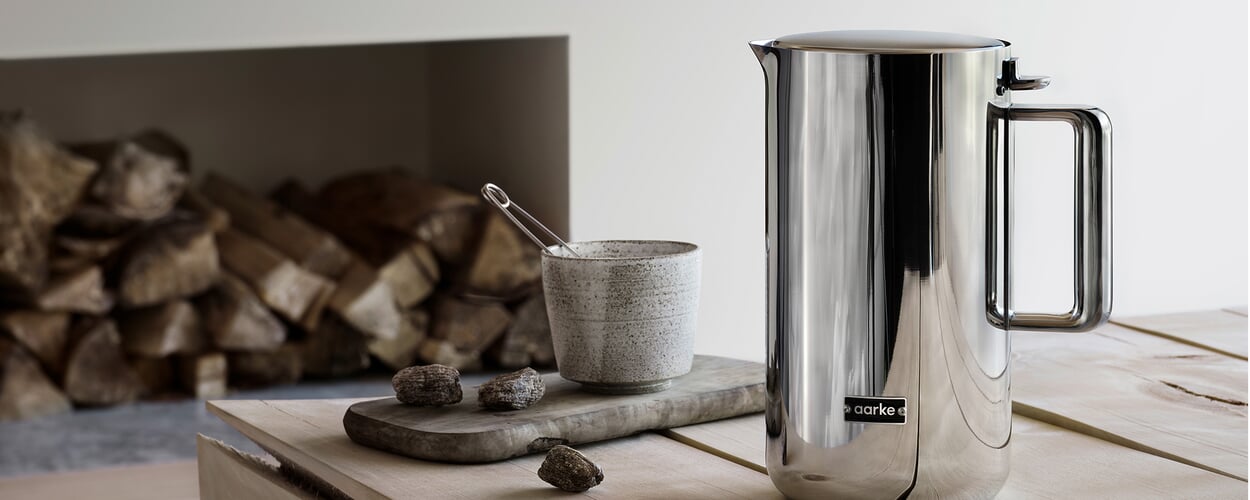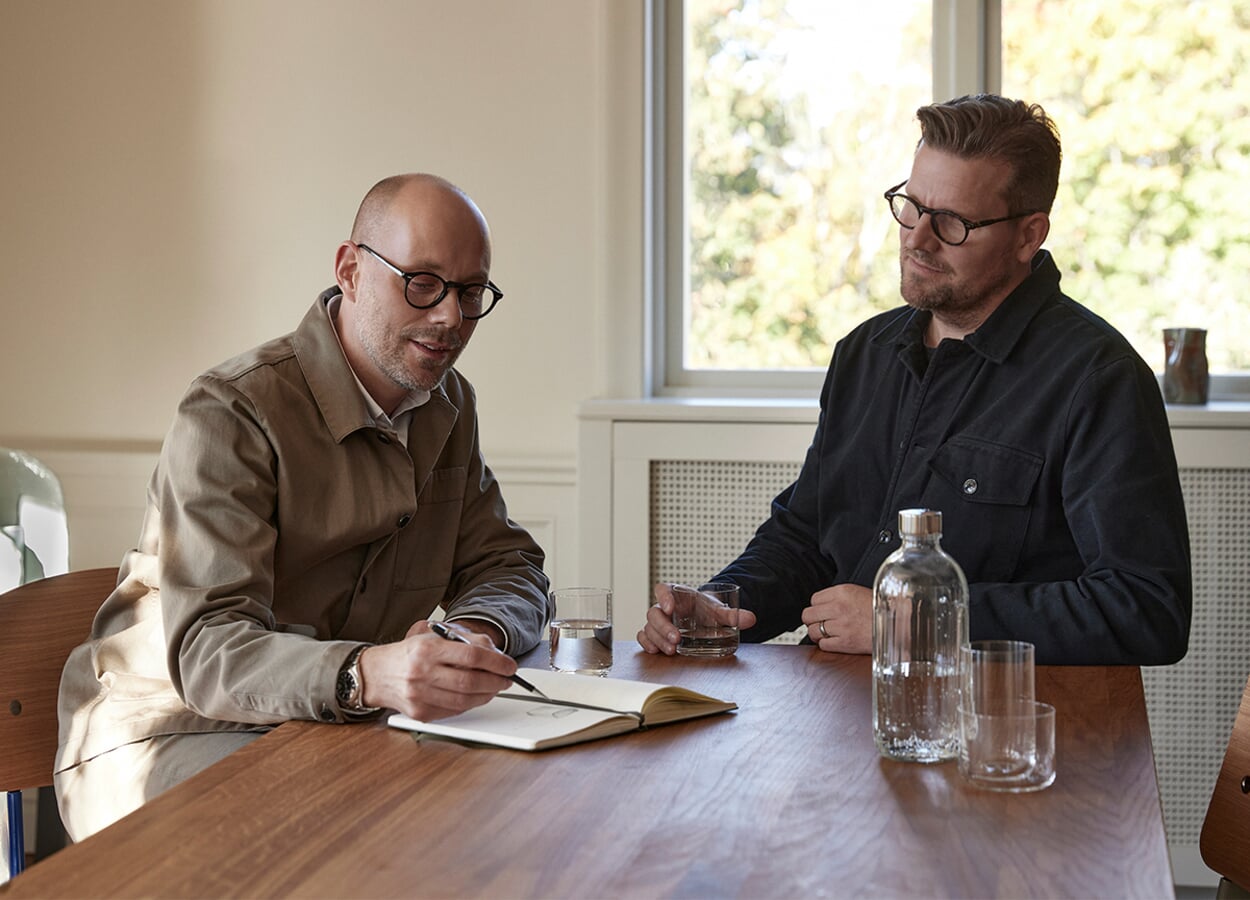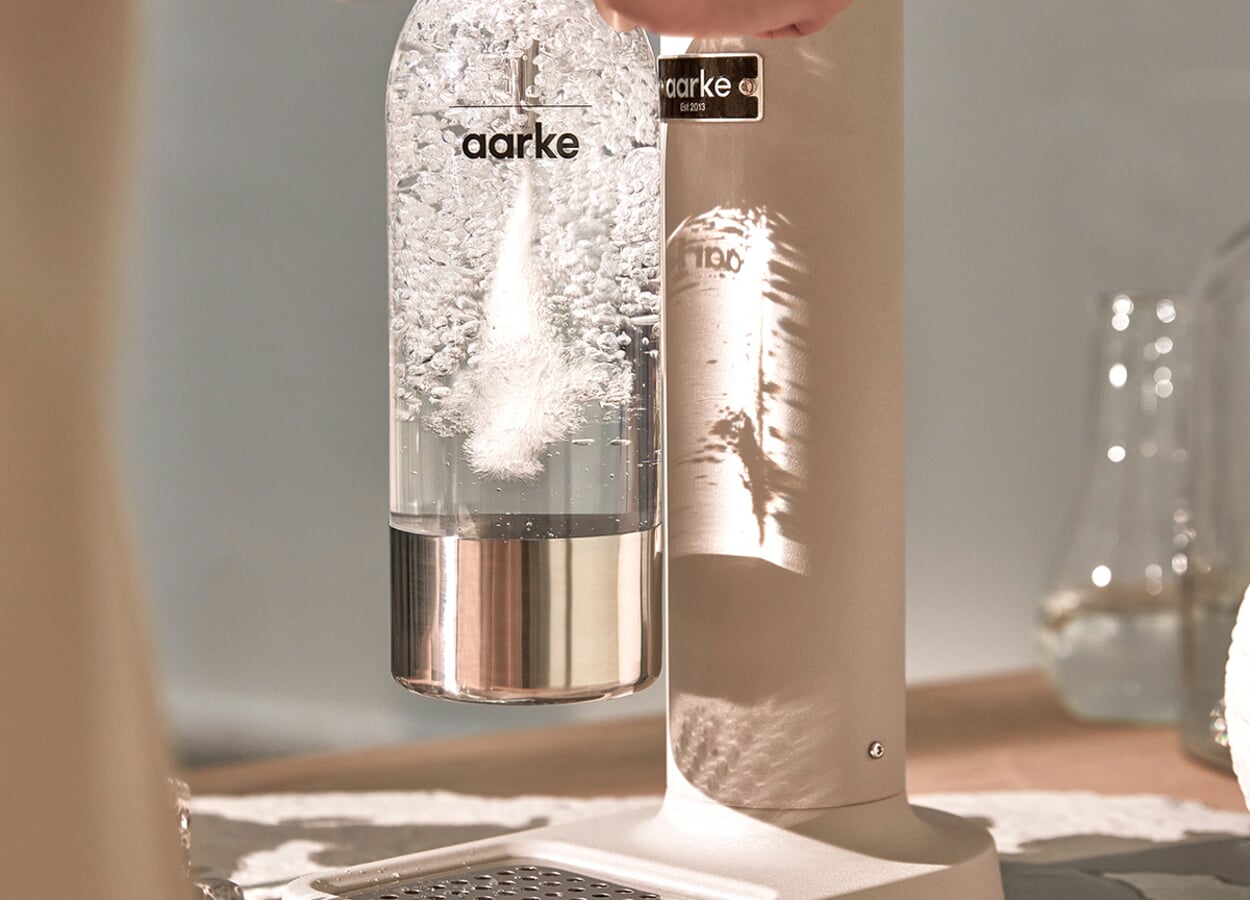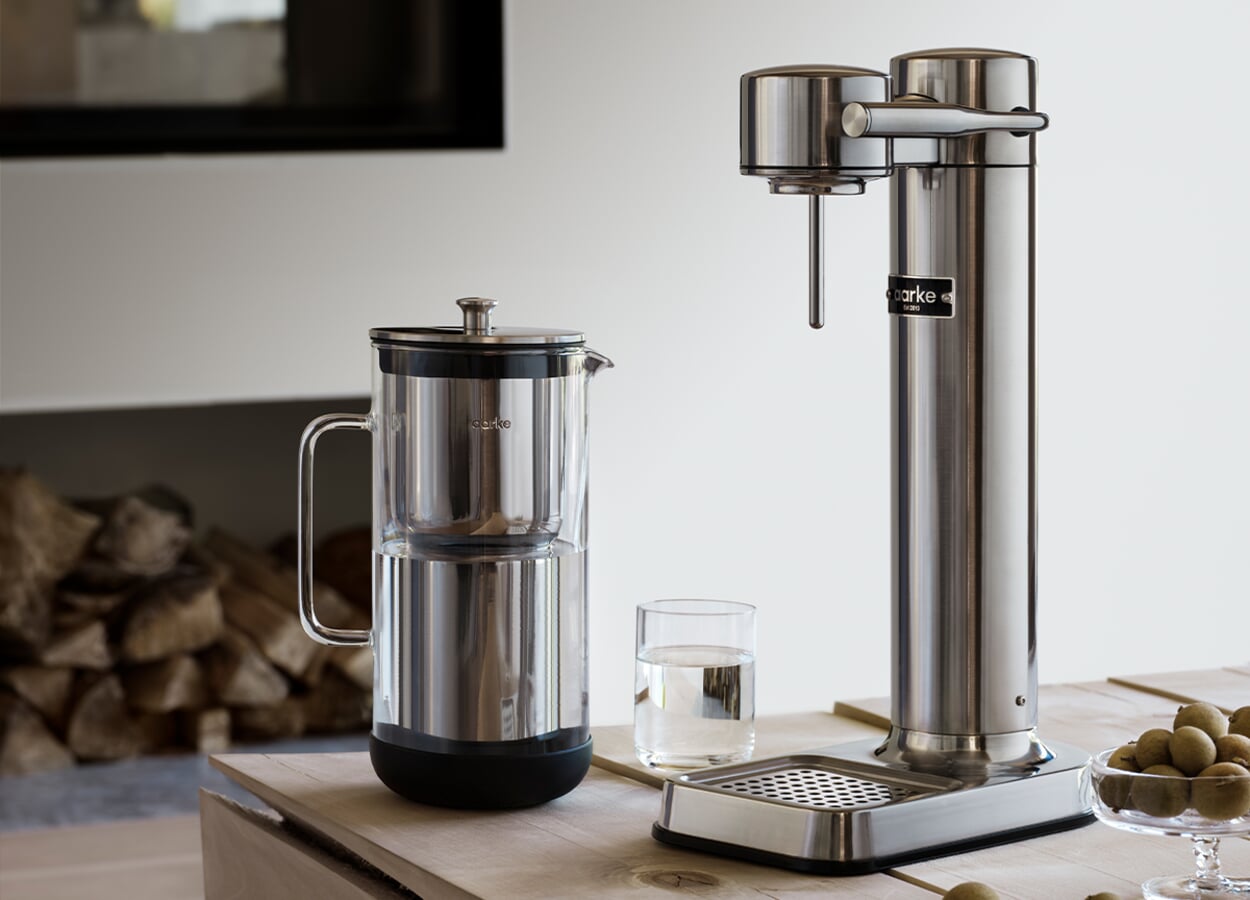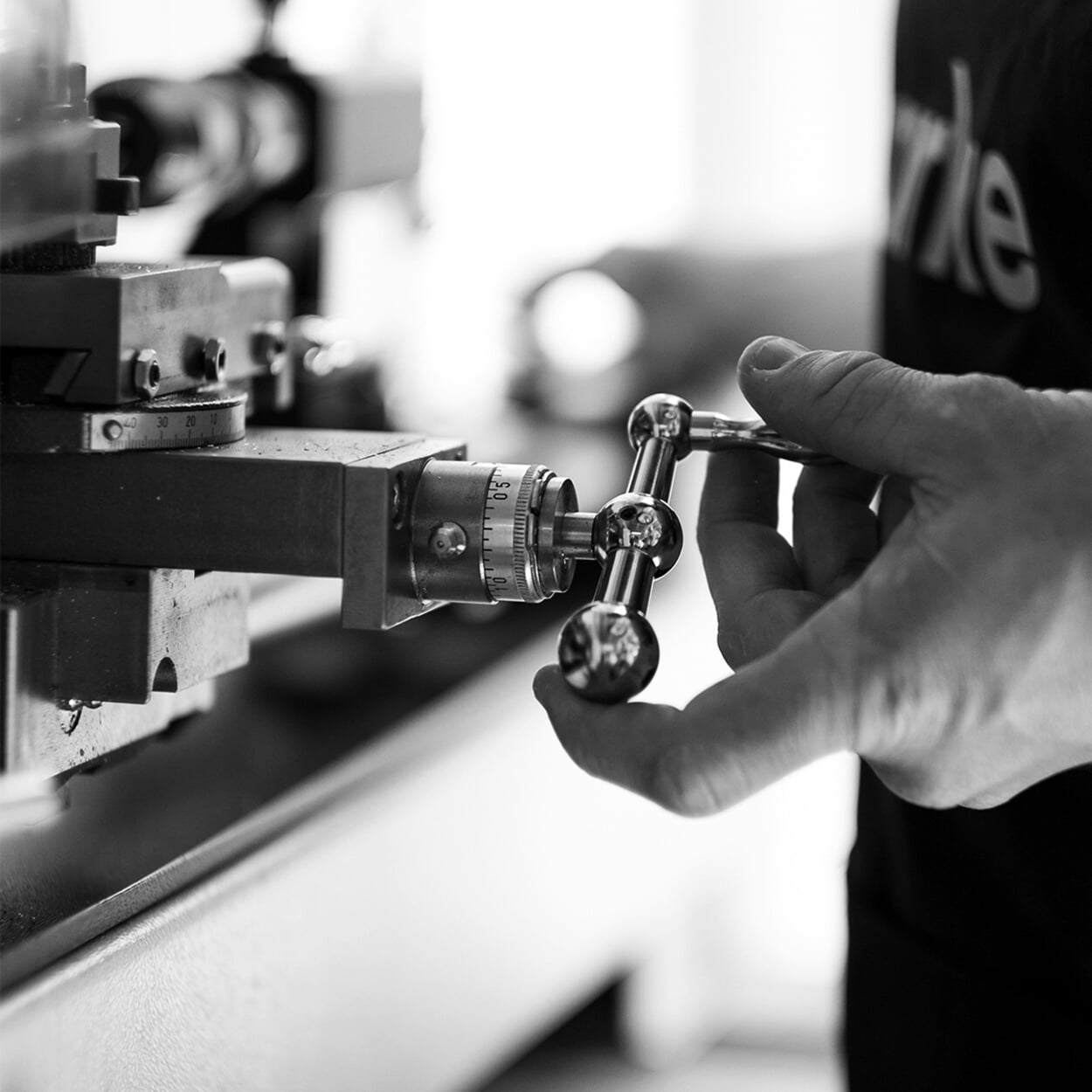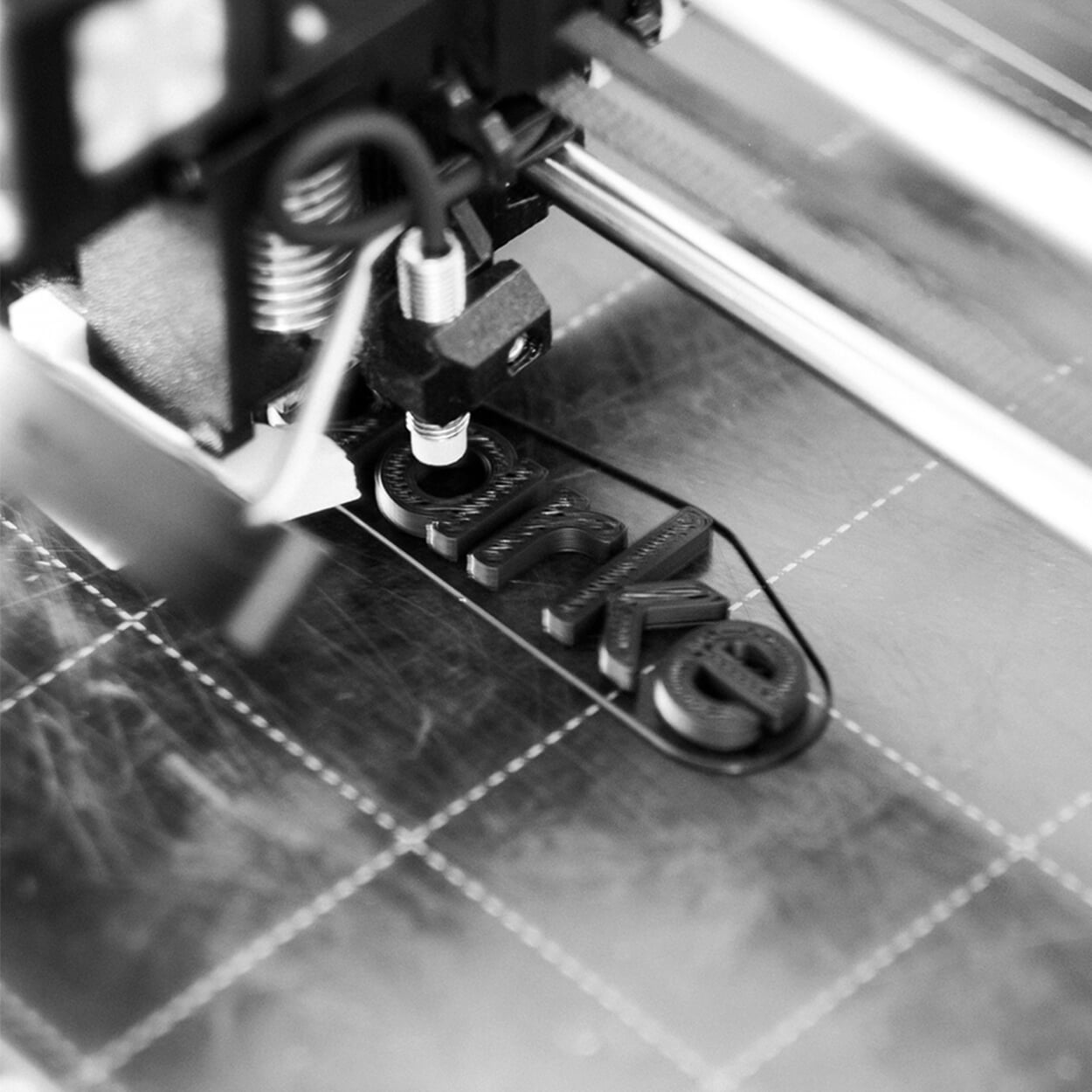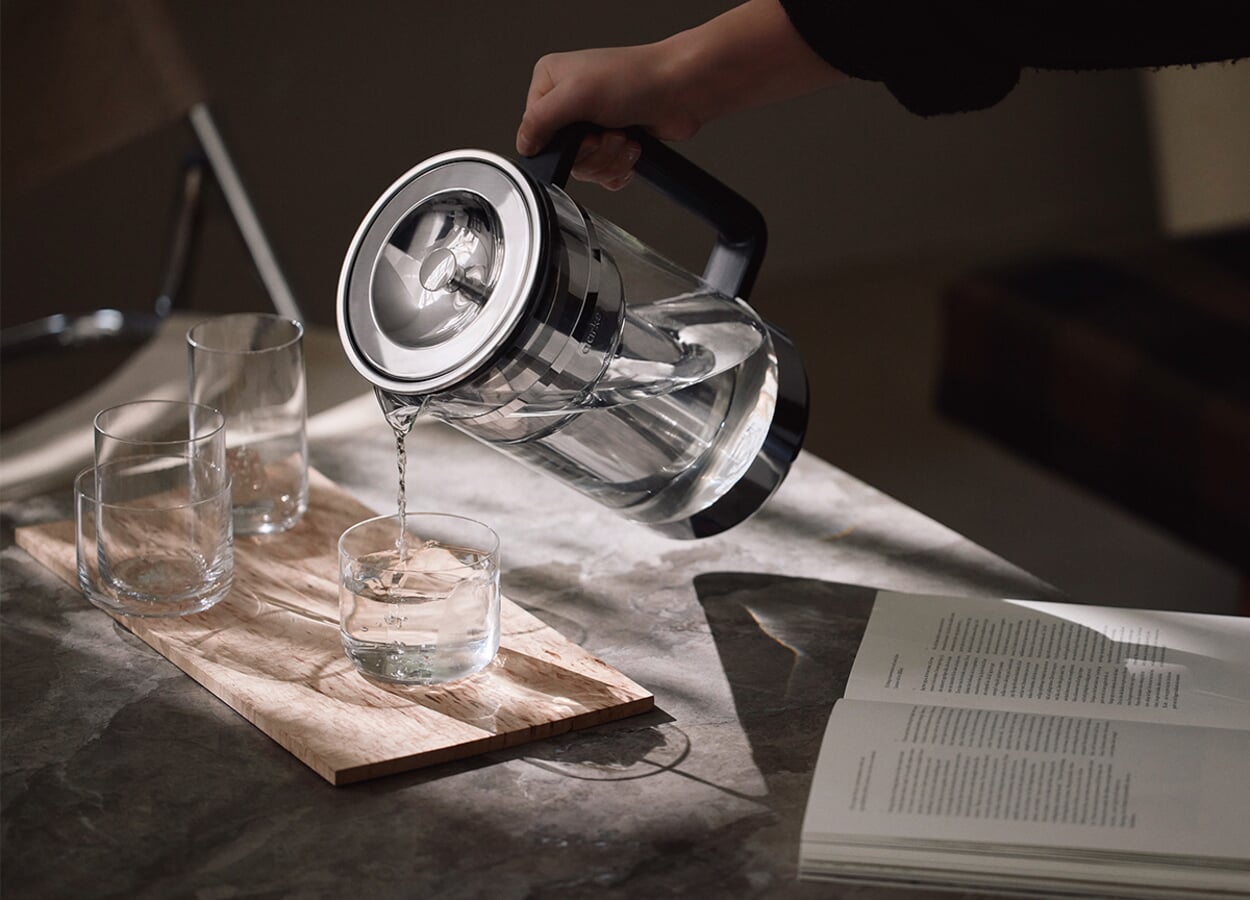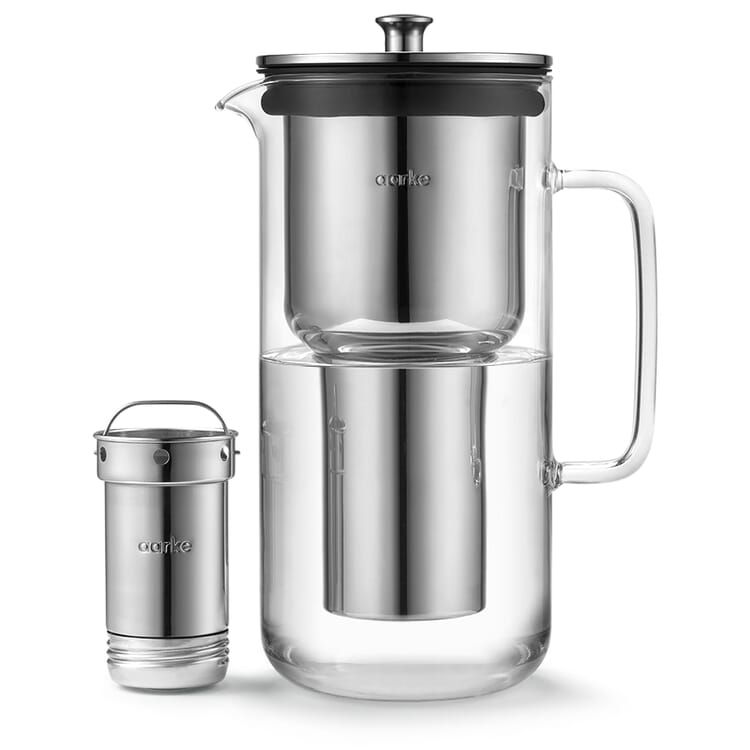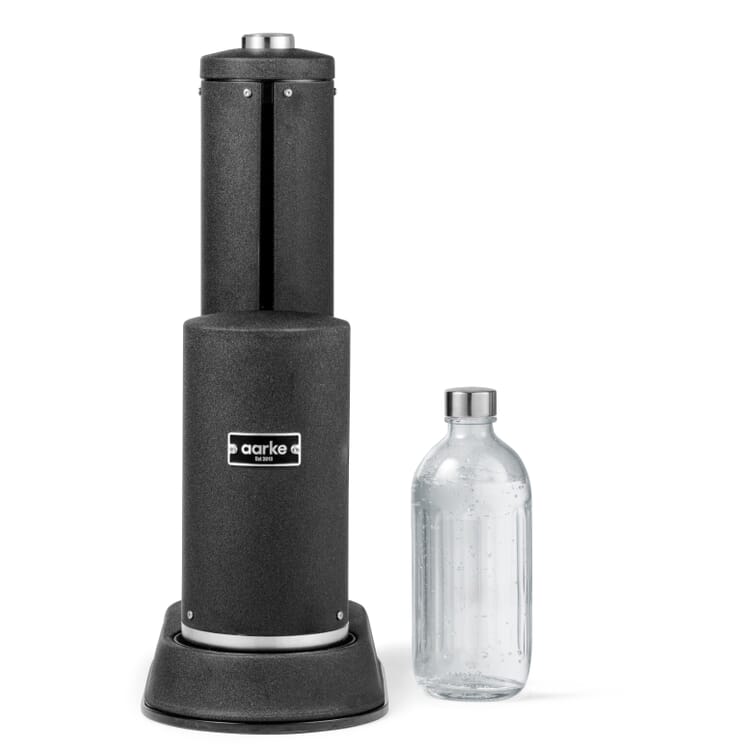Manufacturer
Revolution from the inside. How Aarke is rethinking household appliance design
Once upon a time, a long, long time ago, there were two creative high school students in Uppsala, Sweden - a medium-sized city 72 kilometers north of Stockholm. While their peers were philosophizing about soccer, dissecting films or discussing love affairs, Carl Ljungh and Jonas Groth were (also) discussing design, architecture and anything that could be designed in any way from an early age. And so it came about that after leaving school, they both studied industrial design at the same university - Jonas with a slight detour via an engineering course - and then founded an agency together, with which they spent 15 years designing smartphones, televisions, coffee machines and other everyday products from well-known manufacturers.
"Not bad", some of you would probably think, given the references in their portfolio, or: "What more could you want?" However, the two founders of Aarke felt an inner dissatisfaction. A dissatisfaction that finally prompted them to rethink their own company in 2013. Away from the supplying agency that merely designs products, towards a company that designs in the truest sense of the word. That develops from the ground up. A company that takes responsibility for its products. More than another decade later, they have succeeded. Their first product, the sparkling water maker with the evocative name Carbonator, has long since found its way onto millions of kitchen counters in design-loving households around the world, and Jonas Groth and Carl Ljungh are sitting opposite me, at least digitally, for an in-depth interview.
So what is it that makes Aarke so different? How do you approach a company whose products you know, but about which you know nothing else? Well, after the interview, I would say the best way is geographically, in concentric circles. Because if anything shapes the creativity of the two Swedes, it is the space in which their ideas are born. So let's first broaden our view and look at the country Aarke comes from.
Functional design for everyone. How Sweden shapes the Aarke company
Scandinavian design is synonymous worldwide with accessible design with a focus on simple shapes and high functionality. Carl Ljungh and Jonas Groth also go this far. But mainly when it comes to interiors. However, when they looked at household appliances in the noughties and early tens, it gave them the creeps. "We always asked ourselves: why does a vacuum cleaner have to look like something from a Star Wars film?" says Groth. "Why is an iron made to look like a rubber dinghy when it's actually a utility item?" "Made of purple plastic," interjects Ljungh, shaking his head. "That's ridiculous, isn't it? These things are made for the home and look like they're from another planet."
But there are obviously other ways. "Why aren't there more iconic products like the Pavoni espresso machine?" Ljungh asked himself decades ago, recalling how his parents bought one in Italy in the 1970s and imported it to Sweden. "I was always very proud of it when people came to visit," laughs the designer. He even asked his parents if he could take it with him when he moved out at home. "But of course they said no way!" Carl Ljungh now owns his own Pavoni and its design style has left a lasting impression on him - a design that basically lives up to Swedish principles, both in terms of user-friendliness and aesthetics.
He explains: "In Scandinavia, everything is designed. Chairs, tables, wallpaper, textiles. But we had the feeling that everyday products, everyday objects that you use again and again without giving them much thought, are incredibly cumbersome, not beautiful, simply not design objects." And Groth adds: "Go into a normal electrical store. You can simply improve everything there. Seriously, the possibilities are endless." And it was precisely these endless possibilities that Ljungh and Groth decided to seize a little over a decade ago. After all, they had a reputation to lose. There were quite pragmatic reasons why the sparkling water maker came first, reports Carl Ljungh: "We were looking for a product that really needed our help. And the sparkling water maker was, well, simply the worst of all."
Good for the long term. Stockholm, its mission - and what Aarke has to do with it
Now let's zoom in a little closer. The year is 2024 and Aarke is based in the Swedish capital Stockholm, a city that 14 years earlier became the first city ever to be named the European Capital of the Environment. Environmental goals have long been enshrined in Swedish policy, and Stockholm, the country's largest center, is leading by example. In 2020, the city was even named the "smartest city in the world" thanks to numerous innovative solutions. It plans to have completely eliminated the use of fossil fuels by 2040 and enables its residents to keep an eye on environmental issues in their everyday lives through low-threshold offers.
And this is precisely where Aarke comes in, says Jonas Groth: "Our idea was to give people the feeling that sparkling water can be just as elegant as opening a bottle of Perrier. In this way, we inspire people to change their behavior towards a more sustainable lifestyle. Or rather, we use design to manipulate them towards a more sustainable lifestyle." The two Swedes don't want to take the topic too seriously: "Sustainability is not something we want to overuse as an argument. Rather, we think you should be able to feel it when you touch and use a product," adds his partner Ljungh and continues: "We've spent many years thinking about what our position on sustainability is, because making more and more products isn't really necessary, is it? We basically don't need more things in the world. What we do need are better products. Products that can withstand everyday demands and the aesthetic eye for a long time. That's how you invest in the future."
For more beauty in everyday life. A mineral water factory as a symbol
First of all, however, Groth and Ljungh are investing in improving the everyday lives of their customers with their products. If you take a closer look at the Aarkes site in Stockholm and also look at the products the Swedish entrepreneurs have launched on the market since their start, you might initially think that the company has focused exclusively on water. At the end of 2023, the two Swedes relocated their headquarters to a disused mineral water factory, which now serves as a prestigious office complex and even features a sculpture of a water bearer on the roof. "Yes," laughs Carl Ljungh, "at first glance, our new office looks quite symbolically located."
"In the beginning, customers thought: Oh, Aarke is the manufacturer of these premium sparkling water makers. And then we launched the water filter. Ah, so Aarke is all about cold water." Ljungh laughs. "Well, and then the kettle came along and everyone thought they understood that it was about water in general." In fact, you only need to know what the name Aarke means to understand that it was about more than that from the very beginning: Because the word "aarke" comes from the Sami language and means something like "everyday". One step and one product at a time, the two designers want to "improve" the whole area of everyday life - and not just on the surface: "Design is not an artificial category for us, design comes from within. It's 100 percent about the user experience. Our aim is to make everyday rituals more pleasant, more enjoyable, and we integrate this into the design."
The devil is in the detail. A workshop with a laboratory feel
To achieve this, the two Swedes, and now a whole host of employees, delve very deeply into the subject matter. When you leave the old brick walls of the former Apotekarnes production facility behind and enter the modern interior of today's Aarke think tank, it's almost as if you've landed in a medical laboratory. An employee draws a concentrated liquid into a syringe and empties it into the water tank of one of the three newly developed Aarke coffee machines carefully lined up. The only sound here is the hissing of an air conditioning system in the background and the syringe clinks after use in a glass of water standing next to it on the almost clinically clean-looking surface of the worktop. In the next room, on the other hand, it is easier to understand why Groth and Ljungh refer to their "workshop" when talking about the Aarke engineers' workplace. Another colleague is sitting in front of a futuristic-looking, loudly whirring machine. Instead of a tool, however, he has a mouse in his hand and is looking at a screen full of graphs and numbers, while next to him a robotic arm connected to hoses lowers itself onto the next workpiece as if by magic. At least there are real metal shavings to be seen, because otherwise the scenario has little in common with a workshop characterized by dirt and the traces of hard physical work.
Aarke is more about precision, nothing is left to chance. And this has been the case since the company was founded. Jonas Groth looks back: "Our initial idea was to make products the way they used to be made. Good products that are connected with screws instead of being glued. Products that can be repaired, that can be completely dismantled into their individual parts if you want to reuse them." But of course, you first have to understand each product and its functional elements in detail. Initially, the two designers hired external engineers, but felt that their quality standards suffered as a result. Fortunately, Jonas had experience as an engineer himself and Carl at least had the understanding of one. "Carl has more of an engineer than I do," smiles Groth. "It was a long journey, but we actually did everything ourselves," reports Ljungh.
And it was anything but easy - contrary to the original expectations: "We wrote a business plan and set out to make this fantastic stainless steel water bubbler that we had in our heads," says the designer. "It couldn't be that difficult, we thought. But it took three years," recalls Ljungh, "and we regretted so many times that we had chosen this impossible product." For example, there is the hole in the nozzle through which the gas enters the bottle. If it is just 0.01 millimetres too wide, the result is a wild splash. Fortunately, this problem is now a thing of the past and the Carbonator has been reliably bubbling at exactly the right intensity since it was launched in 2016.
But even today, new Aarke products still take an average of three years to reach market maturity. "There are a lot of design companies that also bring household appliances onto the market, but they just slap their style onto a conventional product," say the two Swedes. "We, on the other hand, develop our products from the inside out. For our kettle, for example, we had to completely reinvent the way a kettle is designed in order to realize our idea of how it should look," states Ljungh and Groth adds: "I think what really sets Aarke apart is that we spend an unhealthy amount of engineering hours on the smallest details."
Meanwhile, a team of around 15 engineers works on product development on an equal footing with the two creative minds: "We keep saying, okay, let's not complicate it. And then we come up with a really good idea during the process and then discard everything we had previously developed several times. It's so tempting, we see the solution and think that if we do it this way, we'll have a much better product. And then one of our engineers comes along and says: 'Oh, but then we'll have to redo everything, that will take months. But it's worth it for us." Just like the self-developed test robots, which put the Aarke devices through tens of thousands of cycles to put their durability to the test, or the lavish use of materials, Ljungh reports: "We never choose to cut costs by reducing screws or materials, quite the opposite. We add more material, more metal, more screws, from year to year, to increase the quality and make it more durable and simply better. It pays off in the end. We are firmly convinced of that."
Convincing with convictions. Two minds, one mission
Well, not least, but actually first and foremost, the Aarke brand is of course driven by the ideas and values of its founders: driven by their vision of making good products, products that are easy to use, repairable, durable and, associated with this, beautiful in the most conventional sense. "I remember the first time we presented the Carbonator and people said: 'It's beautiful, it looks exactly like a sparkling water maker should look'," Ljungh recalls. "And we always try to get to exactly that point. To an obvious design that is exactly as it should be. And then it doesn't matter whether it was designed 20 years ago or today."
Longevity through timelessness: the two Swedes have been working together as a well-coordinated team for decades and keep throwing the ball at each other until they are both satisfied with the result. "We try not to make any compromises. We look for an idea that we both like. And if that's the case, there's a better chance that lots of people will like it," says Carl at the end of our conversation and Jonas adds: "Yes, I think that sums it up. It should be a synthesis of ideas and not a compromise. Until we both think that the result is better than our initial idea."
"If you try to design something really simple, it's actually really complex," says Ljungh. But it's worth it, because Groth adds: "People usually love people, right? Not products. So every time a customer uses this word, for example when they say: 'I love your water filter', then we know we've done something right." Just like the Pavoni from Ljungh's youth: "We also want to make things with built-in values," concludes Ljungh, "the materiality, the aesthetics, something that lasts so long that your children will want to take it with them when they move out. That's our ultimate idea of a product we can be proud of." And proud they both are. You can tell.

